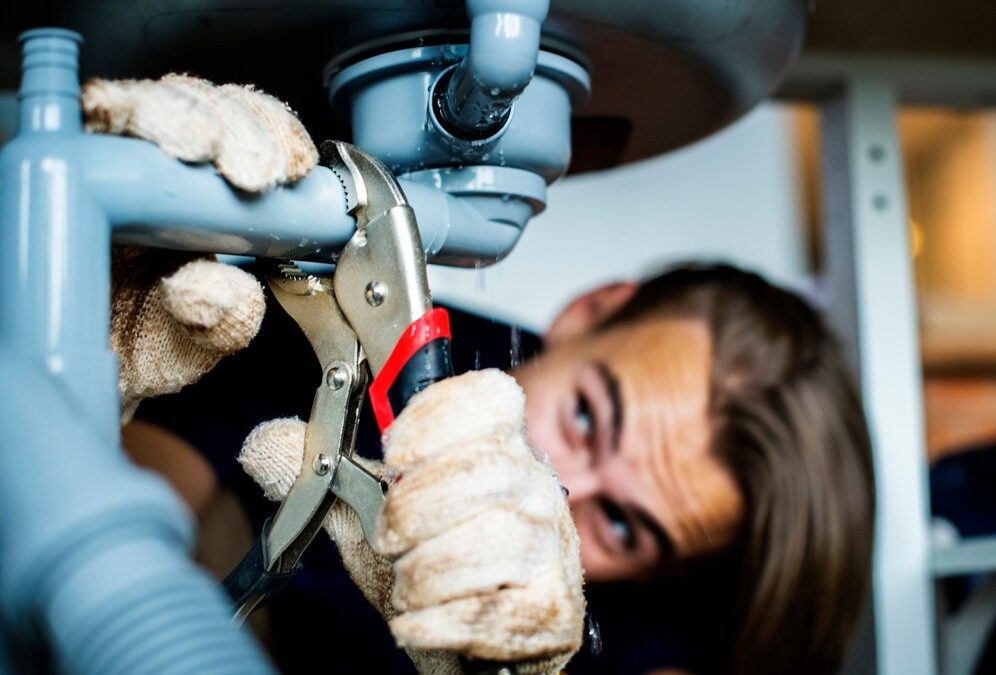Managing an aging commercial building comes with unique challenges, especially when it comes to maintaining an outdated plumbing system. Unlike newer structures built with the latest materials and technologies, older buildings can face a myriad of plumbing problems that require careful attention and specialized expertise to handle effectively. As the pipelines and fixtures age, they often become more susceptible to issues that can not only cause inconvenience but also potentially severe disruptions to your business operations.
At Plumb Krazy Plumbing, we understand the intricacies of dealing with plumbing in aging commercial buildings. Regular maintenance and timely upgrades are critical to ensuring the plumbing system functions smoothly and reliably. Without proper oversight, older plumbing can lead to increased water usage, higher utility bills, and the risk of significant water damage, which can all negatively impact your bottom line. It’s not just about fixing problems as they arise; it’s about proactively managing your plumbing to avoid emergencies that could disrupt your business. This approach helps maintain the structural integrity of the building and ensures a safe, functional environment for all occupants.
Challenges of Plumbing in Older Commercial Buildings
Plumbing in older commercial buildings presents unique challenges that demand expert attention and innovative solutions. Over time, piping systems in these structures may become highly susceptible to a range of issues, including corrosion, leakage, and inefficient water flow. This can lead to persistent problems such as water discoloration, inconsistent water pressure, and even severe plumbing failures that disrupt operations. Understanding these complexities helps us anticipate potential issues and proactively manage them before they escalate.
Another significant challenge is compliance with updated water regulations and standards. Older systems often fall short of contemporary environmental and efficiency mandates, necessitating upgrades or complete overhauls to align with current best practices. Each of these challenges requires a thoughtful approach to balance the preservation of the building’s integrity, the need for modern functionality, and budget considerations. Addressing these requires not just plumbing expertise but a strategic vision to sustain the building’s operational capacity.
Key Areas to Monitor for Plumbing Degradation
Regular monitoring of certain key areas in plumbing systems is crucial for maintaining the operational integrity of older commercial buildings. Firstly, water heaters represent a critical area where inefficiency or failure can have a ripple effect across the entire facility. These units should be inspected for signs of wear, sediment build-up, and corrosion. Similarly, sewer and drain lines require attention to prevent blockages and backups, which are not only disruptive but can also pose health hazards.
Another critical area involves all exposed piping, including shut-off valves and joints, which should be checked for corrosion or leaks. Special attention should be directed towards parts of the plumbing that are exposed to extreme temperatures or chemical substances, as they are more prone to deterioration. Finally, fixtures and external faucets should also be examined for drips or leaks, which can escalate water waste and thereby increase operational costs. Effective monitoring of these areas not only helps in the early identification of potential problems but also plays a crucial role in planning preventive maintenance schedules and interventions.
Modern Solutions for Aging Plumbing Systems
To overcome the challenges posed by aging plumbing infrastructure in older commercial buildings, integrating modern solutions is crucial. One effective approach is the use of trenchless technology for repairing and replacing pipes. This method minimizes the need for extensive excavation, reducing disruption to the building’s operations and preserving the structural integrity of the site. Additionally, installing automated water monitoring systems can provide real-time data on water use, pressure, and potential leaks. These systems not only enhance the efficiency of water management but also allow for immediate responses to plumbing irregularities.
Replacing old fixtures with new, high-efficiency models is another solution that can lead to significant improvements in water usage and cost savings. For instance, low-flow toilets and faucets reduce water waste without compromising functionality. For larger systems, upgrading to advanced boiler and water heating solutions can optimize energy consumption and improve the overall sustainability of the facility. By adopting these modern plumbing technologies, older commercial buildings can significantly enhance efficiency, reduce costs, and align with contemporary environmental standards.
Preventive Maintenance Tips to Prolong System Lifespan
Establishing a routine preventive maintenance schedule is essential to prolonging the lifespan of plumbing systems, especially in older commercial buildings. Regularly scheduled inspections and servicing can prevent the occurrence of major plumbing failures and the subsequent expensive repairs. Key preventive measures include flushing water heaters annually to remove sediment buildup, regularly checking and replacing worn parts like gaskets and seals, and performing CCTV inspections of sewer lines to detect early signs of blockage or damage.
Another important aspect of preventive maintenance is training staff on basic plumbing upkeep and leak detection. Empowering employees with the knowledge to identify and report minor issues before they escalate can save significant repair costs and downtime. Additionally, it’s beneficial to establish a relationship with a professional plumbing service that understands the specific needs of your facility. Regular audits by experienced plumbers ensure that all aspects of your plumbing system are optimized for performance and efficiency.
Conclusion
Navigating the complexities of plumbing in older commercial buildings requires a strategic blend of modern solutions, vigilant monitoring, and proactive maintenance. By understanding the unique challenges these structures present and implementing targeted improvements, operational efficiencies can be significantly enhanced. Remember, the goal is not just to manage aging systems but to transform them into more sustainable and cost-efficient components of your commercial facility.
If you’re looking to upgrade or maintain the plumbing infrastructure of your older commercial building, reach out to us at Plumb Krazy Plumbing. Our team of experts is equipped with the tools and knowledge to provide solutions that meet your current needs and anticipate future challenges. Let our commercial plumbers help you ensure that your plumbing systems are robust, efficient, and capable of supporting your business’s operations long into the future.

